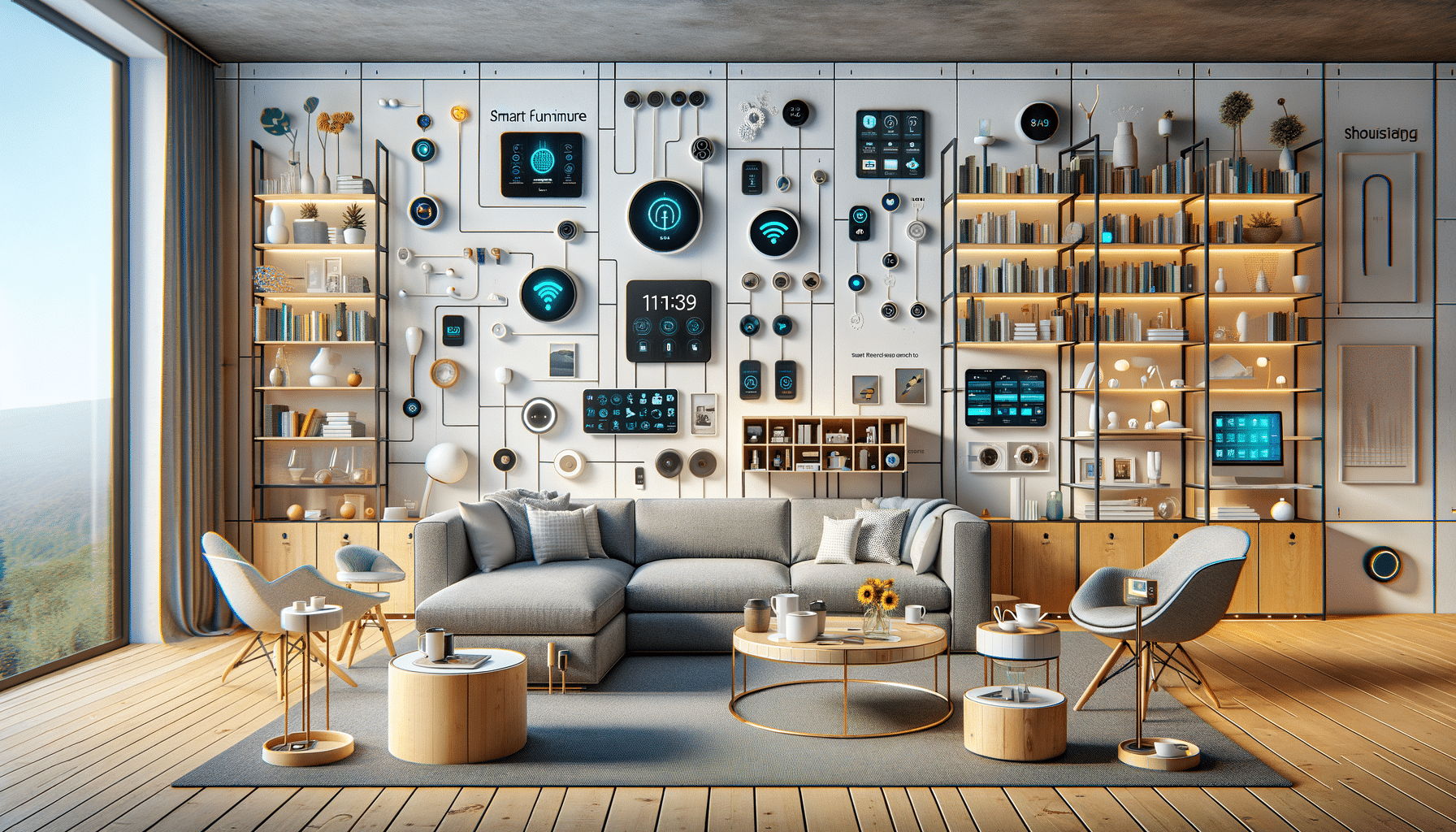Smart Furniture: Revolutionizing Modern Living Spaces
Smart furniture is transforming our living spaces by integrating technology with design, offering convenience and efficiency in our daily lives.

Introduction to Smart Furniture
In the realm of interior design and home automation, smart furniture is rapidly gaining popularity. These innovative pieces are more than just aesthetically pleasing; they integrate technology to enhance functionality and convenience. As our lives become increasingly digital, the demand for furniture that can keep up with our tech-savvy lifestyles is on the rise. Smart furniture addresses this need by offering solutions that are both practical and stylish, making our living spaces more efficient and enjoyable.
The Evolution of Smart Furniture
The concept of smart furniture is not entirely new, but its evolution has accelerated with advancements in technology. Originally, furniture was designed solely for comfort and utility. However, with the integration of smart technology, furniture now offers features such as built-in charging stations, adjustable settings for comfort, and even the ability to connect with other smart devices. This evolution reflects a broader trend in the Internet of Things (IoT), where everyday objects are interconnected to improve user experience.
Smart furniture is designed to adapt to the needs of modern consumers, who value both form and function. For example, a smart sofa might include USB ports and wireless charging pads, allowing users to charge their devices without leaving their seats. Similarly, smart beds can monitor sleep patterns and adjust firmness levels to promote better rest. These innovations demonstrate how smart furniture is transforming traditional home furnishings into multifunctional pieces that cater to contemporary lifestyles.
Benefits of Smart Furniture
The benefits of smart furniture extend beyond mere convenience. One of the primary advantages is the ability to save space, which is particularly valuable in urban environments where living areas are often limited. Smart furniture can combine multiple functions into a single piece, such as a coffee table that doubles as a work desk or a bed with built-in storage compartments.
Moreover, smart furniture can contribute to energy efficiency. Many pieces are equipped with sensors that automatically adjust lighting or temperature settings based on occupancy, reducing energy consumption. Additionally, smart furniture can enhance the overall aesthetic of a home by eliminating clutter and creating a more streamlined appearance.
Challenges and Considerations
Despite its many advantages, smart furniture also presents certain challenges and considerations. One of the main concerns is the cost, as smart furniture tends to be more expensive than traditional options. This price premium can be a barrier for some consumers, though the long-term benefits may justify the initial investment.
Another consideration is the potential for technological obsolescence. As technology continues to advance rapidly, there is a risk that smart furniture could become outdated quickly. Consumers must weigh the benefits of current technology against the likelihood of future advancements that may render their purchases obsolete.
Finally, privacy and security are important considerations. Smart furniture often collects data to optimize its functionality, raising concerns about data privacy and the potential for hacking. Manufacturers must ensure robust security measures are in place to protect user information.
The Future of Smart Furniture
The future of smart furniture looks promising, with continued advancements in technology and design. As artificial intelligence and machine learning become more integrated into everyday objects, smart furniture will likely become even more intuitive and personalized. Imagine a home where furniture anticipates your needs, adjusting settings based on your preferences and habits.
Moreover, the trend towards sustainability is expected to influence the development of smart furniture. Manufacturers are exploring eco-friendly materials and energy-efficient technologies to create smart furniture that is both innovative and environmentally responsible.
As smart furniture continues to evolve, it will undoubtedly play a significant role in shaping the future of interior design and home automation. By blending technology with design, smart furniture offers a glimpse into a future where our living spaces are more connected, efficient, and enjoyable.